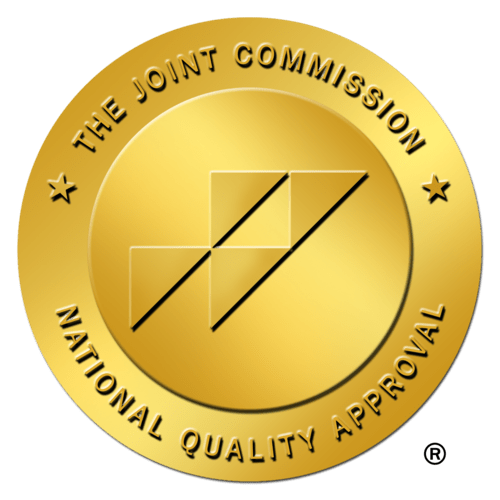
Take a moment to inhale deeply, filling your lungs with oxygen. Breathing keeps us alive, but many people with respiratory problems struggle with this essential task every day.
In times of adversity, when the very act of breathing was threatened by the COVID-19 pandemic, respiratory therapists emerged as unsung heroes, providing crucial care to save lives. If you're passionate about healthcare, committed to patient well-being, and eager to make a meaningful impact on people's lives, a career as a respiratory therapist might be your calling.
This guide is about how to become a respiratory therapist and the time and financial investment required for this career. It also covers the important roles they play in patient care and emergencies. Read on to learn about respiratory therapists and how they bring life to their careers.
Table of contents:
- What is a Respiratory Therapist
- How to become a Respiratory Therapist
- How long does it take to become a Respiratory Therapist
- How much does it cost to become a Respiratory Therapist
- Roles and responsibilities of Respiratory Therapists
- Impact on patient outcomes
- Advancements in Respiratory Therapy
What is a respiratory therapist?
Respiratory therapists help doctors and healthcare teams care for patients with breathing problems like asthma, bronchitis, and pneumonia. They give important treatment and support to these patients. Their role encompasses conducting respiratory assessments, providing breathing treatments, managing ventilators, and educating patients on managing their respiratory health.
At the heart of every breath lies the dedication of a respiratory therapist. These highly skilled healthcare professionals are experts in treating, and managing a wide range of respiratory disorders. And the need for respiratory therapists is growing. Experts project that the demand for respiratory therapists will rise by 14% between 2021 and 2031. This is considerably higher than the 5% average growth rate for all occupations, according to the Bureau of Labor Statistics.
How to become a respiratory therapist
The journey to becoming a certified respiratory therapist (CRT) involves a combination of education requirements and hands-on clinical training. Let's explore the step-by-step process on how to become a Respiratory Therapist:
1. High school preparation:
The path to becoming a respiratory therapist can begin as early as your high school years. Take advantage of science and math courses, as they form the foundation for your future studies in respiratory therapy. Excellent communication and people skills are also invaluable, as respiratory therapists must build strong connections with their patients and colleagues.
2. Pursue a respiratory therapy program
Upon completing high school, the next step is enrolling in an accredited respiratory therapist school. Most aspiring respiratory therapists pursue an associate's degree in respiratory therapy, which typically takes around two years to complete. During this program, you will delve into essential subjects such as anatomy, physiology, pharmacology, and cardiopulmonary diagnostics.
3. Clinical training
One of the most crucial aspects of becoming a licensed respiratory therapist is hands-on clinical training. During your associate's degree program, you will gain practical experience by working with patients in various healthcare settings. Experienced respiratory therapists and mentors will guide you along the way. This training provides invaluable exposure to real-life scenarios and prepares you for the challenges and rewards of patient care.
4. Licensure and certification
After successfully completing your respiratory therapy program, you must obtain a state license to practice legally. Each state has its own licensing requirements, but most states require passing the Certified Respiratory (CRT) exam administered by the NBRC. For those continuing their education, individuals are strongly encouraged to pursue the Registered Respiratory Therapist (RRT) credential as well.
5: Launch your career as an entry-level respiratory therapist
After becoming licensed, you can start working in hospitals, skilled nursing facilities, and home healthcare agencies. Upon completing one year as a respiratory therapist, you may become eligible to collaborate with platforms like CareRev. This partnership empowers you to exercise control over your schedule, enhancing work-life balance by choosing when and where you work.
How long does it take to become a respiratory therapist?
The time it takes to become a respiratory therapist varies based on the educational path you choose. On average, completing an associate's degree in respiratory therapy takes approximately two to three years.
Some students may opt for a bachelor's degree program, which typically adds an extra two years to the educational journey. Earning a bachelor's degree can improve job opportunities for individuals who want to pursue leadership positions and specialize in respiratory care. Although it requires additional time, the degree can open doors to better employment prospects.
How much does it cost to become a respiratory therapist?
The cost of becoming a respiratory therapist can vary depending on factors such as the school or college you attend, your residency status, and any additional expenses. On average, an associate's degree program in respiratory therapy may cost between $10,000 to $25,000, covering tuition fees, textbooks, and supplies. But, respiratory therapy students can look into financial aid, scholarships, and grants to make their dreams more attainable. Learn about average salaries for respiratory therapists.
Roles and responsibilities of respiratory therapists
Respiratory therapists are frontline healthcare providers, and their roles go far beyond operating medical equipment. Some of their primary responsibilities include:
- Respiratory Assessments: Conducting thorough assessments to identify various respiratory conditions. These assessments involve evaluating patients' lung function, oxygen levels, and overall respiratory health.
- Breathing Treatments: Administering breathing treatments, such as bronchodilators and nebulized medications, to help patients manage respiratory symptoms and improve lung function.
- Mechanical Ventilation Management: Managing mechanical ventilation for patients who cannot breathe on their own. This skill was particularly vital during the COVID-19 pandemic, where they cared for critically ill patients struggling to breathe.
- Patient Education: Helping patients and their families with managing breathing issues and treatment plans. They also educate them on how to properly use inhalers and maintain healthy lungs. Additionally they provide guidance on making lifestyle changes that can improve breathing outcomes.
- Emergency Response: Assisting in stabilizing patients' breathing during emergencies such as cardiac arrests or trauma cases. They are an essential part of rapid response teams and play a crucial role in saving lives.
Impact on patient outcomes
Respiratory therapists significantly impact patient outcomes. By delivering timely and effective respiratory care, they improve patients' lung function, reduce hospital stays, and enhance overall quality of life. Studies have shown that patients under the care of respiratory therapists experience lower mortality rates and reduced hospital readmissions.
Crucial role during the COVID-19 pandemic
The COVID-19 pandemic brought respiratory therapists into the spotlight as essential frontline workers. They worked tirelessly to care for critically ill patients, often operating ventilators and life-supporting equipment in intensive care units. Their expertise in managing respiratory distress was pivotal in saving lives during the peak of the pandemic. Their dedication and resilience in the face of adversity were nothing short of heroic.
Advancements in Respiratory Therapy
Medical technology advancements have greatly impacted respiratory therapy, giving therapists better tools and treatments to help patients. Some notable advancements include:
- High-Flow Nasal Cannula (HFNC): HFNC therapy delivers a high flow of heated and humidified oxygen to patients, improving oxygenation and reducing the need for invasive ventilation.
- Non-Invasive Ventilation (NIV): NIV techniques, such as BiPAP and CPAP, deliver airway pressure to patients without the need for intubation, reducing complications and improving patient comfort.
- Telemedicine and Remote Monitoring: With the rise of telemedicine, respiratory therapists can remotely monitor patients' lung function and provide valuable guidance, particularly in managing chronic respiratory conditions.
Embrace the journey
As you start your journey to becoming a respiratory therapist, remember that you are not just starting a job. You are becoming someone who protects breathing and supports improved respiratory health. Your dedication will touch lives, empower patients, and breathe hope into every challenging situation. From the frontlines of healthcare to the comfort of patients' homes, your expertise will be sought and cherished.
Embark on this path with passion, compassion, and a commitment to lifelong learning. As you stand at the threshold of this remarkable profession, know that you are joining a noble legacy of respiratory therapists who have made a profound difference in countless lives.
Want to learn about other in-demand healthcare professions? Explore more professions with shifts offered through the CareRev App.





